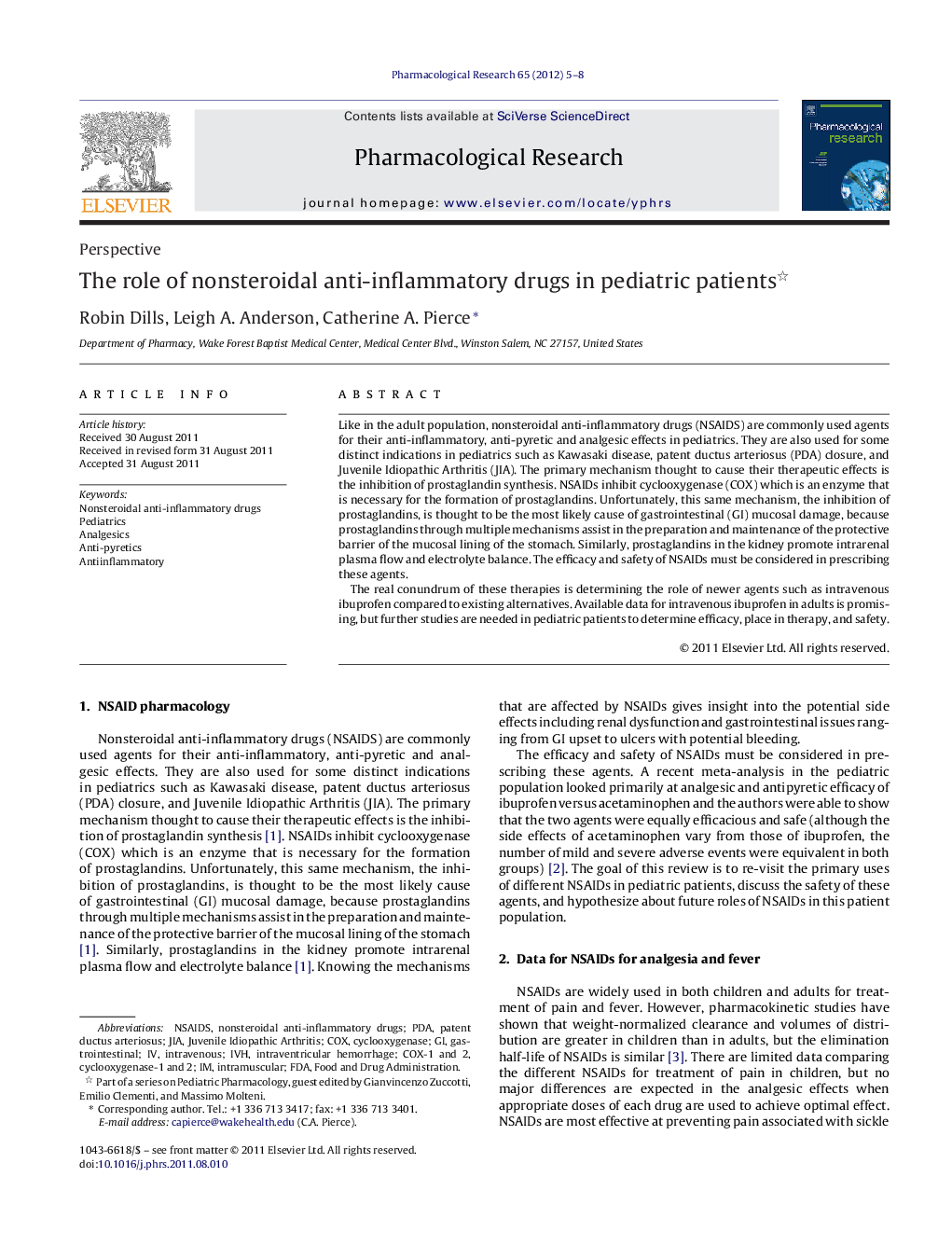| Article ID | Journal | Published Year | Pages | File Type |
|---|---|---|---|---|
| 2562319 | Pharmacological Research | 2012 | 4 Pages |
Like in the adult population, nonsteroidal anti-inflammatory drugs (NSAIDS) are commonly used agents for their anti-inflammatory, anti-pyretic and analgesic effects in pediatrics. They are also used for some distinct indications in pediatrics such as Kawasaki disease, patent ductus arteriosus (PDA) closure, and Juvenile Idiopathic Arthritis (JIA). The primary mechanism thought to cause their therapeutic effects is the inhibition of prostaglandin synthesis. NSAIDs inhibit cyclooxygenase (COX) which is an enzyme that is necessary for the formation of prostaglandins. Unfortunately, this same mechanism, the inhibition of prostaglandins, is thought to be the most likely cause of gastrointestinal (GI) mucosal damage, because prostaglandins through multiple mechanisms assist in the preparation and maintenance of the protective barrier of the mucosal lining of the stomach. Similarly, prostaglandins in the kidney promote intrarenal plasma flow and electrolyte balance. The efficacy and safety of NSAIDs must be considered in prescribing these agents.The real conundrum of these therapies is determining the role of newer agents such as intravenous ibuprofen compared to existing alternatives. Available data for intravenous ibuprofen in adults is promising, but further studies are needed in pediatric patients to determine efficacy, place in therapy, and safety.
Graphical abstractFigure optionsDownload full-size imageDownload as PowerPoint slide
